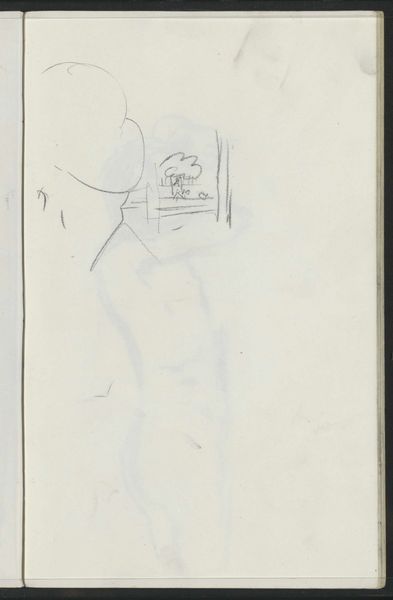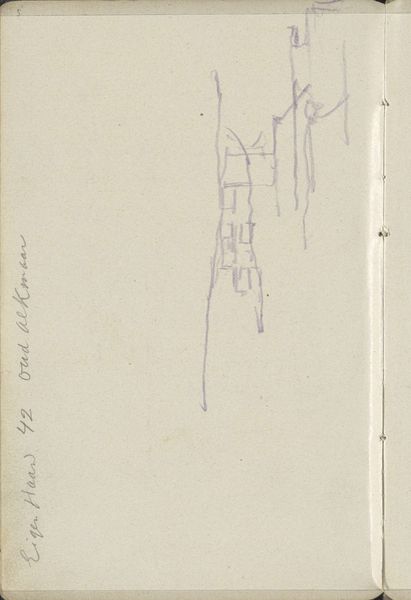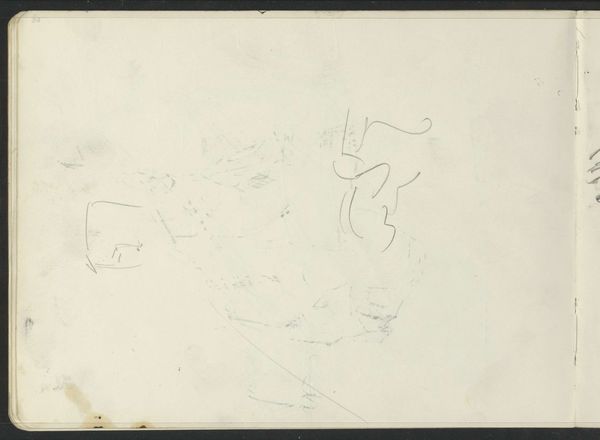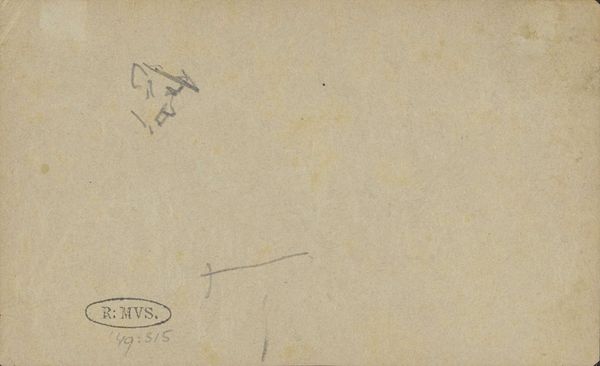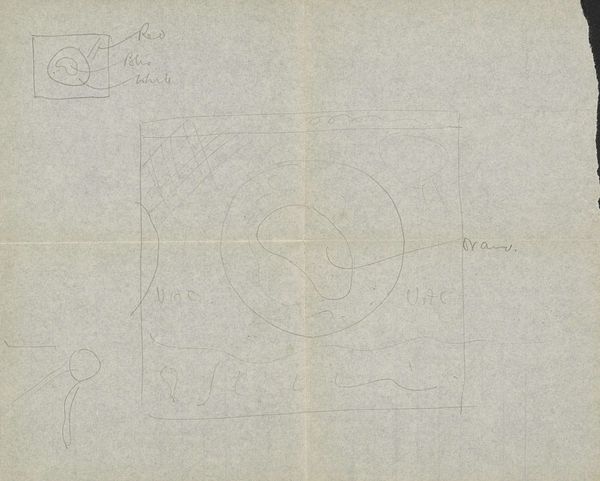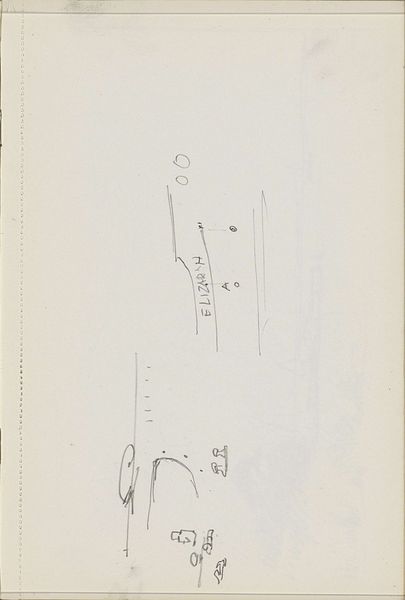
drawing, pencil
#
portrait
#
drawing
#
hand written
#
script typography
#
hand-lettering
#
hand drawn type
#
hand lettering
#
hand-written
#
hand-drawn typeface
#
fading type
#
pencil
#
handwritten font
#
modernism
#
small lettering
Copyright: Rijks Museum: Open Domain
Curator: This drawing by Antoon Derkinderen, entitled "Twee mannen met optische instrumenten," or "Two Men with Optical Instruments," created sometime between 1900 and 1903, initially strikes me as almost hesitant. It's a pencil sketch, seemingly incomplete, a fragment of an idea. Editor: I’m immediately drawn to the sketchiness, too, the evident process. The graphite, thinly applied, suggests a directness – you can almost feel the artist working through his concept right there on the page. What about the composition? How do you see it functioning structurally? Curator: Well, there's a certain geometric clarity beneath the casual execution. See how the shapes, while organic, adhere to implied lines? There is a compositional arrangement of subjects almost distributed by a deliberate, grid-like structure in the visual field. Editor: Yes, it’s more than mere scribbles, of course! Notice, too, how the work speaks to the instruments of its subjects – their scientific inquiry. What materials were readily available at the turn of the century for drawing such as this, how does this impact the artistic landscape of the time, in which are notions like photography and technology radically expanding? Curator: Interesting that you bring that up; The drawing, while seemingly simple, complicates our perception. Is this then about capturing reality more accurately or commenting on humanity's relation with modernity and a technology mediated reality, perhaps suggesting a critical stance through its very medium, which differs from painting? Editor: Precisely! The apparent ease of drawing could be seen as a quiet challenge to industrial modes of image production. Is it also suggesting a resistance to the potential alienation caused by increased tech production? Or does that potentially risk over interpretation? Curator: Well, that's always a danger, isn't it? Perhaps it’s sufficient to observe the inherent qualities of the pencil medium to grasp its intentional impact and significance, leaving any political claims a bit ambiguous. But this makes it ever more interesting. Editor: I see your point, the open-ended dialogue between intention and effect is part of what keeps bringing us back. This subtle tension is what continues to engage, years after.
Comments
No comments
Be the first to comment and join the conversation on the ultimate creative platform.
